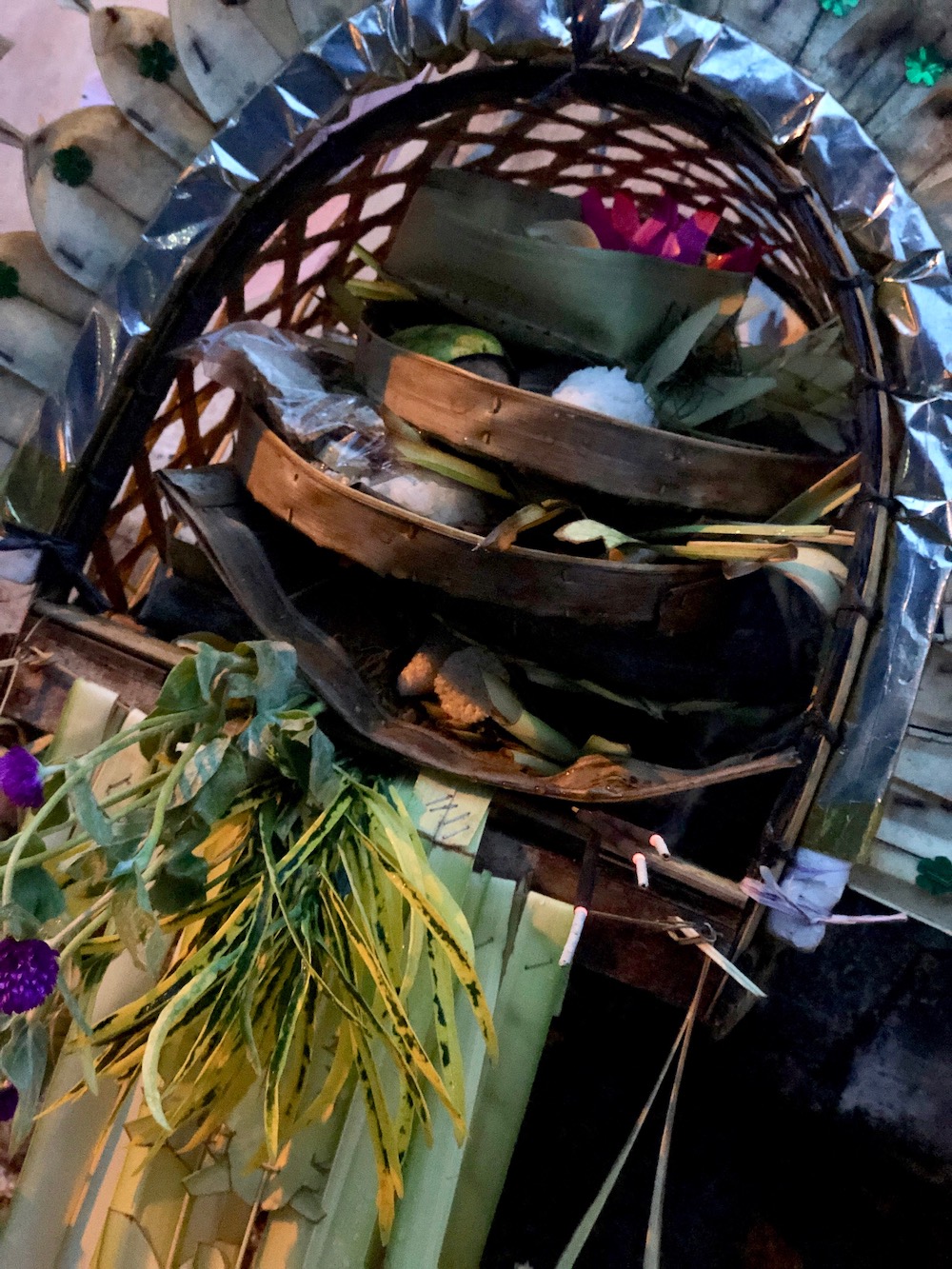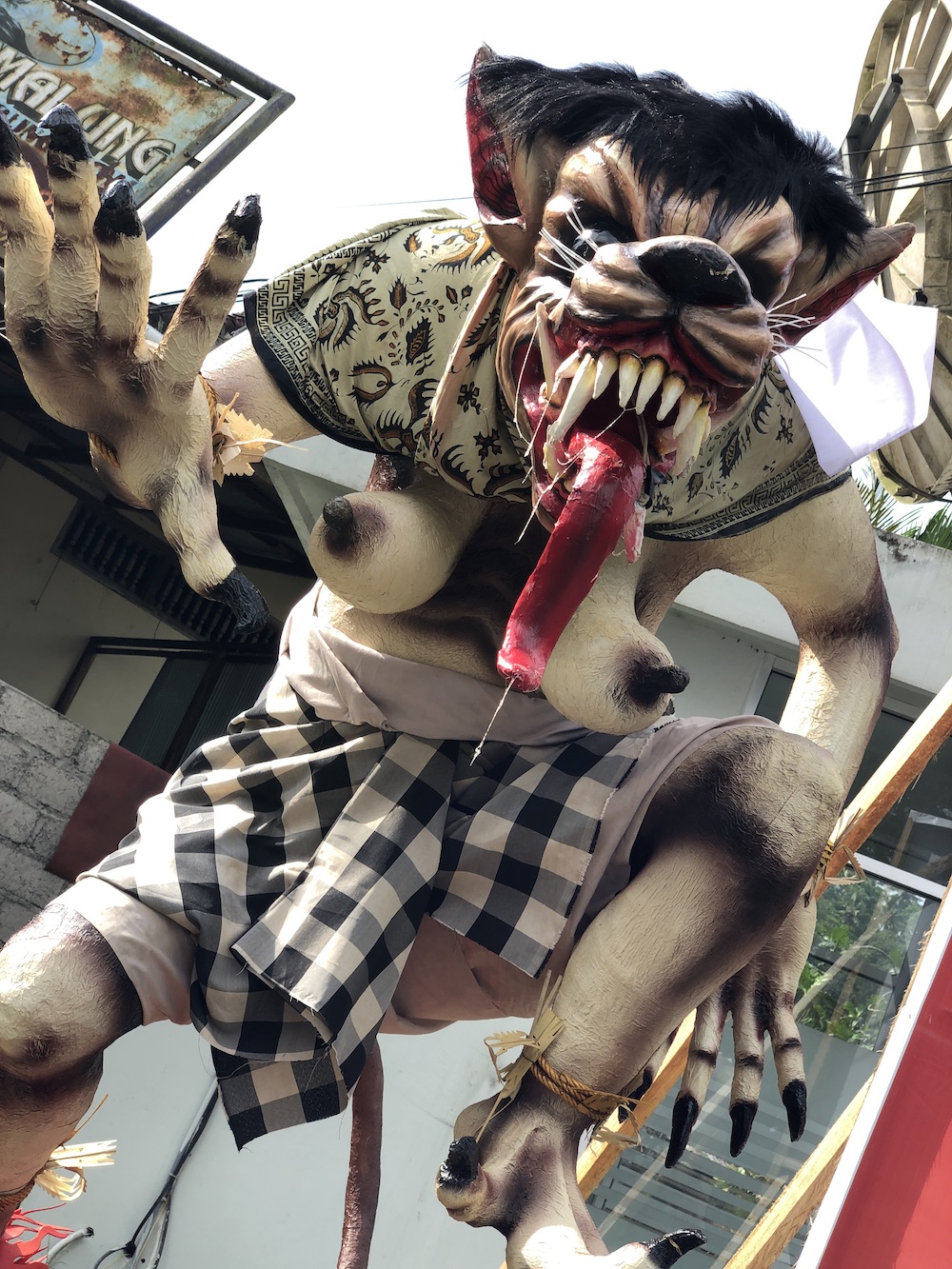Kids’ Corner:
Nyepi: Balinese New Year
An Ogeh-Ogeh parade on Nyepi Eve in Sanur, Bali.
The way people express their beliefs is different all over the world. Being able to travel around, experience and view these beliefs has given our family an idea of how big and diverse this world, and the people on it, are. During our stay in Bali, we encountered a completely foreign concept: Nyepi, the Balinese New Year.
Of course, every culture has its own national holidays and events—some more extreme than others. For example, Jewish people have a similar holiday to Nyepi, Yom Kippur. It is a day of atonement, fasting, refrain from work, etc. Islamic people have an entire month, Ramadan, where people fast from sunrise to sundown to commemorate the gift of the Quran.
Before I tell you about Nyepi, here’s a little background about Bali: although most of Indonesia is Muslim, around 80% of Balinese are Hindu. and the locals make daily offerings to their many gods. They put these offerings everywhere—on the ground, in special woven mailbox-type poles, and even on motorbikes.
People even put offerings on their motorbikes. Maybe they think it will help them avoid the crazy drivers in Bali!
An offering “mailbox,” about 5 feet off the ground.
The higher the offering is off the ground, the more important the god is. The sheer amount of temples and offerings on the streets of Bali is mind blowing. Every step you take on the here brings a risk of stepping on offerings or their remnants.
Offerings left on the ground are for the lowest of the gods.
The offerings are placed on small mats, woven from reeds into a flower-like shape and secured with staples. Then flowers such as marigolds and plumerias are placed in the middle. Lastly, they sprinkle some “holy water”, a bit of rice, and an incense stick, which is all placed them outside.
Making an offering plate out of reeds.
Now, on to Nyepi: what makes Nyepi stand out is how extreme it is. On Nyepi Day, nobody is allowed to leave their residence. The entire island shuts down. It is a day of reflection, meditation, and most of all, silence—hence its other name: Quiet Day. The night before Nyepi, the Balinese parade through the streets, banging on pots and pans and carrying gigantic, grotesque statues called Ogeh-Ogeh which can be huge: 5-10 meters/15-30 feet tall!
My sister and an Ogeh Ogeh. She is the one NOT smiling.
Some Balinese view the silent day as a way for demons to pass over the island. They believe that if the are quiet enough, the spirits will think there aren't any people of the island and leave it alone. Many also think of it as a day for ancestors to come and visit their families. Most Balinese Hindu households are home to many generations of family, and most have their own private temple where they present daily offerings to their ancestors. Some resources say Bali has at least 20,000 temples, and that’s NOT including the temples inside the houses.
Just one of the 20,000+ temples in Bali.
The night before Nyepi, which starts at 6am, many tourists rush out to the nearby island Lombok. Since Bali shuts down completely for the New Year holiday, most tourists don't want to waste a day in such a unique and beautiful place by sitting in a hotel room all day. In many areas, the WiFi is turned off, but all over the island you are forbidden to leave your house or even make any noise, or you will be fined. We spent most of Nyepi day sitting in bed and watching it pour rain, and listening to the thunder. It was actually a perfect day to be locked inside since we would not have wanted to go out in the downpour.
Rain or shine, Balinese people put out offerings every day.
We spent the entire day off our devices, playing games and doing homework. Looking back I think a day of silence is a good idea. Only I wouldn't make people go offline, or give up their phones (*cough* mom *cough*). Being completely shut out from everyday life is a good idea, but in case of an emergency, or extreme boredom, having a WiFi connection/device is a good resource.
Scary, funny, or both?
Nyepi was an fascinating experience, but honestly I’m not sure if I would recommend it. When on a shorter vacation, having to waste a day like that would be kind of frustrating. The event I would recommend is the Ogoh-Ogoh parade. The paper mache statues of demons where frightening and hilarious at the same time. Many looked like giants and wolves, and for some reason most of them had saggy breasts. All in all, it was interesting to see Nyepi in Bali, but if I come back to Bali, I don’t think I’d time my visit to do it again!
Bibliography:
en.m.wikipedia.org/wiki/Ogoh-ogoh
en.wikipedia.org/wiki/Nyepi
adventurousmiriam.com/top-5-temples-in-bali/









